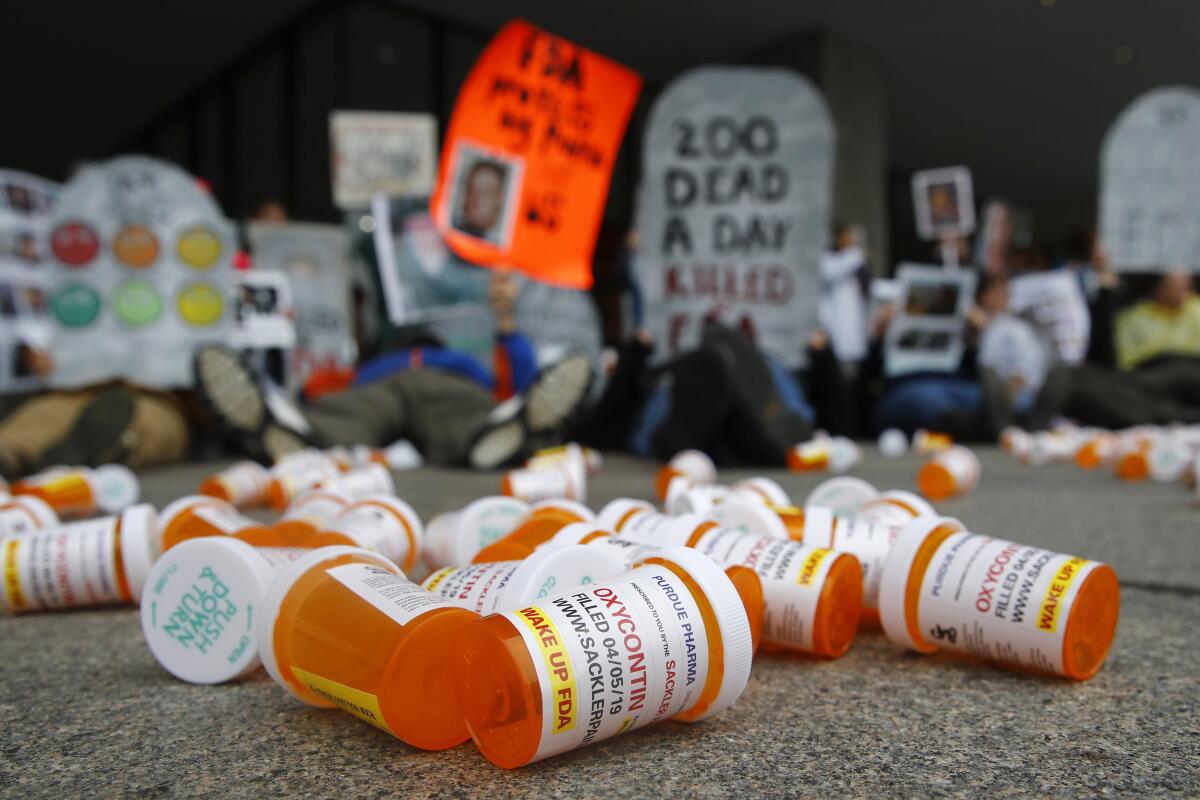Drug overdose deaths in the U.S. appear to be falling, CDC data show

- Share via
U.S. overdose deaths last year likely fell for the first time in nearly three decades, preliminary statistics suggest.
Nearly 68,000 drug overdose deaths were reported throughout the country last year, according to provisional figures posted Wednesday by the Centers for Disease Control and Prevention. The number may go up as more investigations are completed, but the agency expects the final tally will not exceed 69,000.
Overdose deaths had been climbing each year since 1990, topping 70,000 in 2017.
Any leveling off — or decline — in overdose deaths is good news, but the overdose death rate is still about seven times higher than it was a generation ago.
“We’re still in a pretty sad situation that we need to address,” said Rebecca Haffajee, a behavioral health researcher at the University of Michigan who studies policies aimed at curbing opioid addiction.
The improvement was driven by a drop in deaths from heroin and prescription painkillers. Those decreases were offset somewhat by continuing increases in deaths involving fentanyl, cocaine and stimulants like methamphetamines. Overdose deaths often involve more than one drug.
It can take months for authorities to complete toxicology tests and other elements of an investigation into a drug-related death. And some states report faster than others. The CDC is expected to report more complete data later this year.
The current overdose epidemic has killed more people than any other in U.S. history. From 2014 to 2017, overdose deaths jumped by 5,000 or more each year.
Experts trace the origins of the epidemic to 1995 and the marketing of the prescription painkiller OxyContin. It was meant be safer and more effective than other prescription opioids, but some patients became hooked. Drug abusers found they could crush the tablets and snort or inject them to get high.
Gradually, more addicts turned to cheaper street drugs such as heroin and fentanyl. In 2015, heroin began causing more deaths than prescription painkillers or other drugs. In 2016, fentanyl and its close cousins became the deadliest drugs, and in 2018 they were involved in about 46% of the reported overdose deaths, according to the preliminary CDC data.
Strategies to reduce drug overdose deaths have included tougher policing, treatment program expansions, policies to limit opioid painkiller prescriptions and wider distribution of the overdose-reversing drug naloxone.
Haffajee and other researchers are trying to figure out what measures are most responsible for the slight improvement.
“It’s complicated because there are so many policies going on,” she said, “and as an evaluator it’s very hard to separate them out and determine which is working.”
Whatever actions are working, it’s doubtful they will drive overdose deaths down quickly, she added.
Stobbe writes for the Associated Press.






